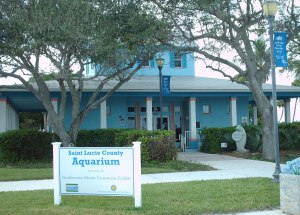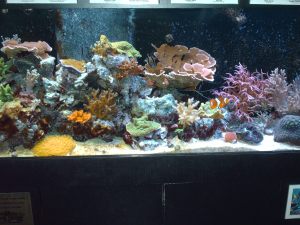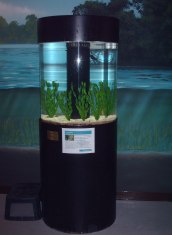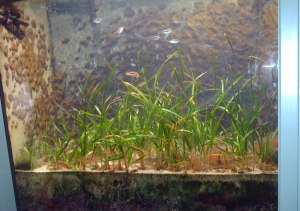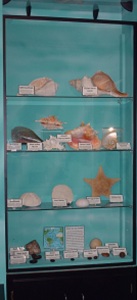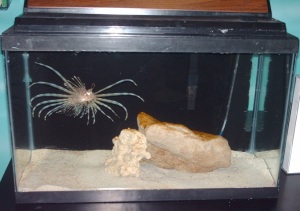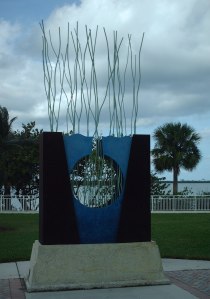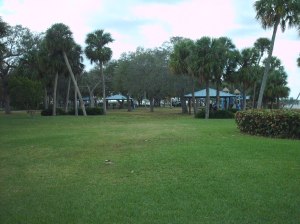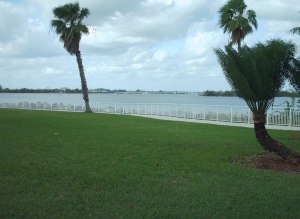 Seven species of sea turtles are threatened or endangered because of human interactions. Loggerhead Marinelife Center rehabilitates adult sea turtles and hatchlings in the Sea Turtle Hospital at 14200 U.S. Hwy 1, in Juno Beach. The center also has a research laboratory.
Seven species of sea turtles are threatened or endangered because of human interactions. Loggerhead Marinelife Center rehabilitates adult sea turtles and hatchlings in the Sea Turtle Hospital at 14200 U.S. Hwy 1, in Juno Beach. The center also has a research laboratory.
While visiting the outdoor hospital listen to the Hospital Interpreters explain the life of the sea turtles and why they were brought to the hospital for rehab. If a turtle can’t be released into the wild because of a permanent injury they’re put into a long-term care facility.
 The powerful jaws of the Loggerhead are used to crush their prey. They eat crabs, jellyfish, and mollusks. Female Loggerheads reach maturity at 35 years of age.
The powerful jaws of the Loggerhead are used to crush their prey. They eat crabs, jellyfish, and mollusks. Female Loggerheads reach maturity at 35 years of age.
Green Sea Turtles reach adulthood by the age of twenty-four when the females start laying eggs. She can lay one hundred eggs at a time, and it takes 2 months for the eggs to hatch. Only 1 in 1,000 reach adulthood. Their diet consists of sea grasses and sea algae.
 Forty species of coral inhabit the coral reefs in Florida. The Coral Reef Exhibit displays corals, fish, and invertebrates that dwell in the exhibit.
Forty species of coral inhabit the coral reefs in Florida. The Coral Reef Exhibit displays corals, fish, and invertebrates that dwell in the exhibit.
 Shrubs and trees are part of the mangrove ecosystem. The Mango Shore Exhibit describes how important the mangroves are to the ecosystem. Fish, snakes, tree crabs, and snakes inhabit the exhibit.
Shrubs and trees are part of the mangrove ecosystem. The Mango Shore Exhibit describes how important the mangroves are to the ecosystem. Fish, snakes, tree crabs, and snakes inhabit the exhibit.
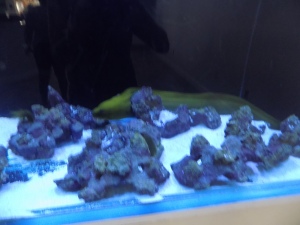 A combination of 5 main tanks and 9 quarantine tanks are on display at the center. Invasive and native species of fish inhabit the tanks. I highly recommend visiting the center a lot to see and do. Hours of operation on the website. Free admission donations accepted.
A combination of 5 main tanks and 9 quarantine tanks are on display at the center. Invasive and native species of fish inhabit the tanks. I highly recommend visiting the center a lot to see and do. Hours of operation on the website. Free admission donations accepted.
